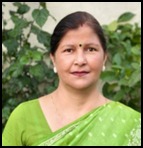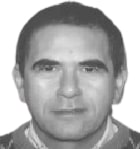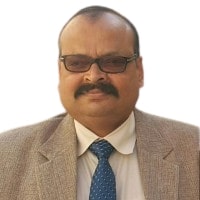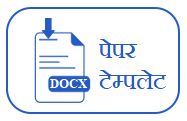Biochemical Health of Soil of A Wide Agricultural Land of Birbhum District in West Bengal

DOI:
https://doi.org/10.54060/a2zjournals.jase.75Keywords:
Biochemical health, Soil analysis, Soil fertility, Plant DiseasesAbstract
or many years soil analysis has been used as an aid to assess biochemical health of soil and plant nutrient management. Achieving and maintaining appropriate level of soil fertility, especially plant nutrient availability is of paramount importance if agricultural land is to remain capable of sustaining crop production at an acceptable level. The Birbhum district, known for its agricultural practices, faces several challenges related to pollution arising from farming activities. Soil sampling and analysis is the first of three important steps in managing the nutrients required by plants. The sec-ond is the interpretation of analytical data leading to the third step, recommendation for nutrient addition. In this paper we would like to explore the biochemical health of soil of Birbhum District having wide spread agricultural land. Through analysis we would like to explore the availability of phosphorus, nitrogen and potassium, physical, physiochemical and chemical parameters of the agricultural soil. It will give a better future to poor farmers of this region through good production of crops and simultaneously the economic condition of this region will improve.
Downloads
References
N. C. Brady, and R. R. Weil, “The nature and properties of soils”, 11th ed. Englewood Cliffs, N.J.: Prentice Hall, 1996.
R. H. H. Ellerbrock, A. Öhn, and H. H. Gerke, “Characterization of soil organic matter from a sandy soil in relation to man-agement practice using FT-IR spectroscopy,” Plant and Soil, vol. 213, pp. 55–61, 1999.
M. A. Badr, “Spatial Distribution of Water and Nutrients in Root Zone under Surface and Subsurface Drip Irrigation and Cantaloupe Yield,” World Journal of Agricultural Sciences, vol. 3, pp. 747–756, 2007.
R. Parnes, “Fertile Soil: A Grower’s Guide to Organic and Inorganic Fertilizers,” Chapter, pp. 9–19, 1990.
A. J. Z. Kempers, “Communicationsin soil science,” Soil Science and Plant Analysis, vol. 17, pp. 715–723, 1986.
R. E. White, “Retention and release of phosphate by soil and soil constituents,” Soils and agriculture:Critical Reports on Applied Chemistry, pp. 71–114, 1980.
P. G. Slavich and G. H. Petterson, “Estimating the electrical conductivity of saturated paste extracts from 1:5 soil, water suspensions and texture,” Soil Res., vol. 31, no. 1, p. 73, 1993.
R. Lal, “Soil carbon sequestration impacts on global climate change and food security,” Science, vol. 304, no. 5677, pp. 1623–1627, 2004.
A. Elgharably and P. Marschner, “Microbial activity and biomass and N and P availability in a saline sandy loam amended with inorganic N and lupin residues,” Eur. J. Soil Biol., vol. 47, no. 5, pp. 310–315, 2011.
P. K. Bandyopadhyay, S. Saha, and S. Mallick, “Comparison of Soil Physical Properties between a Perma-nent Fallow and a Long-Term Rice-Wheat Cropping with Inorganic and Organic Inputs in the Humid Subtropics of Eastern In-dia,” Communications in Soil Science and Plant Analysis, vol. 42, pp. 435–449, 2011.
A. C. Das and D. Andmukherjee, “Soil application of insecticides influences microorganisms and plant nutri-ents,” Applied Soil Ecology, vol. 14, pp. 55–62, 2000.
T. Biswas and S. C. Kole, “Microbial Growth and Arsenic Tolerance Ability as Influenced by Inherent Arsenic Loading in Polluted Soils of West Bengal,” Nature Environment& Pollution Technology, vol. 11, 2012.
D. Mukhopadhyay, P. K. Mani, and S. K. Sanyal, “Effect of phosphorus, arsenic and farmyard manure on arsenic availability in some soils of West Bengal,” J. Ind. Soc. Soil Sci, vol. 50, pp. 56–61, 2002.
A. Banerjee, J. K. Datta, N. K. Mondal, and T. Chanda, “Influence of integrated nutrient management on soil properties of old alluvial soil under mustard cropping system,” Commun. Soil Sci. Plant Anal., vol. 42, no. 20, pp. 2473–2492, 2011.
S. Gupta, S. Banerjee, R. Saha, J. K. Datta, and N. K. Mondal, “Fluoride geochemistry of groundwater in nalhati-1 block of the birbhum district”, West Bengal, India. Fluoride, vol. 39, no. 4 pp. 318-320, 2006.
S. Gupta, S. Satpati, R. N. Saha, and S. Nayek, “Assessment of spatial and temporal variation of pollutants along a natural channel receiving industrial wastewater,” Int. J. Environ. Eng., vol. 5, no. 1, p. 52, 2013.
S. Nayek, S. Gupta, and R. N. Saha, “Metal accumulation and its effects in relation to biochemical response of vegetables irrigated with metal contaminated water and wastewater”, .J. Hazard. Mater., vol. 178, pp. 588-595, 2010.
P. Jha, A. K. Biswas, B. L. Lakaria, R. Saha, M. Singh, and A. S. Rao, “Predicting total organic carbon con-tent of soils from walkley and black analysis,” Communications in Soil Science and Plant Analysis, vol. 45, no. 6, pp. 713–725, 2014, DOI.10.1080/ 00103624. 2013.874023.
B. S. Dwivedi, V. K. Singh, M. C. Meena, A. Dey, and S. P. Datta, “Integrated nutrient management for enhancing nitrogen use efficiency,” Indian Journal of Fertilisers, vol. 12, pp. 62–71, 2016.
A. Kubala-Kukuś et al., “X-ray spectrometry and X-ray microtomography techniques for soil and geological samples analy-sis,” Nucl. Instrum. Methods Phys. Res. B, vol. 364, pp. 85–92, 2015.
P. Porto, D. E. Walling, V. Cogliandro, and G. Callegari, “Exploring the potential for using 210Pbex measurements within a re-sampling approach to document recent changes in soil redistribution rates within a small catchment in southern Ita-ly,” J. Environ. Radioact., vol. 164, pp. 158–168, 2016.
D. Kong, Y. Wang, J. Wang, Y. Teng, N. Li, and J. Li, “Evaluation and characterization of thyroid-disrupting ac-tivities in soil samples along the Second Songhua River, China,” Ecotoxicology and Environmental Safe-ty, Ecotoxycology and Environ-mental, vol. 133, pp. 475–480, 2016.
X. Chang et al., “Exploring effective sampling design for monitoring soil organic carbon in degraded Tibetan grasslands,” J. Environ. Manage., vol. 173, pp. 121–126, 2016.
G. D. Lattanzi and G. E. Stinchcomb, “Isotopic analysis of museum-archived soil samples from archeological sites: A case-study using the Abbott Farm National Historic Landmark, USA,” J. Archaeol. Sci. Rep., vol. 4, pp. 86–94, 2015.
G. W. Thomas, “Soil pH and soil acidity,” in SSSA Book Series, Madison, WI, USA: Soil Science Society of America, American Society of Agronomy, 2018, pp. 475–490. doi:10.2136/sssabookser5.3.c16. ISBN 978-0-89118-866-7. S2CID 93493509
D. L. Corwin and S. M. Lesch, “Apparent soil electrical conductivity measurements in agriculture,” Comput. Electron. Agric., vol. 46, no. 1–3, pp. 11–43, 2005.
J. Smith and J. Doran, “Measurement and use of pH and electrical conductivity for soil quality analysis. In Methods for assessing soil quality,” Methods for assessing soil quality, vol. 49, pp. 169–185, 1996.
M. Sahu, S. Mondal, and C. P. M. Nisab, “Fertility status of some lateritic soils of Birbhum district with special reference to nitrogen, phosphorus, potassium and sulphur,” Curr. J. Appl. Sci. Technol., pp. 118–126, 2020.
A.G. Shukla, “Evaluation of soil fertility in soils of Pamgarh blocks, district Janjgir Champa of Chhattisgarh”, M. Sc. (Ag.) Thesis, I.G.K.V. Raipur, (Chhattisgarh), pp. 63-64, 2011.
C.B. Benefield, “A rapid method for measuring cellulase activity in soils”, Soil Biol. Biochem. vol. 3 pp. 325-329, 1971.
L. A. Kapustka, A. E. Annala, and W. Swanson, “The peroxidase-glucose oxidase system; A method to deter-mine glucose liberated by carbohydrate degrading soil enzymes,” Plant Soil, vol. 63, pp. 487–490, 1981.
A. K. Singh, D. Grace, and N. P. Dkhar, “Effect of some soil properties on availability of micronutrients in Entisols of Me-ghalaya,” Journal of the Indian Society of Soil Science, vol. 45, pp. 581–583, 1997.
H. L. S. Tandon, “Sulphur Research and Agricultural Production in India”, 3rd edition. The Sulphur Institute, Washington D.C., U.S.A, 1991.
K. Mengel,; and E. A. Krikby, “Principles of plant nutrition”, IPI, Bern, Switzerland, 1987.
R. Sakal and A. P. Singh, Sulphur in Balanced Fertilisation in Eastern India. (in) Proc. The Suphur Institute (TSI) /Fertiliser As-sociation of India (FAI) / International Fertiliser Industry Association (IFA)Symp. on Sulphur in Balanced Fertilisation. New Delhi, 1997.
H. L. S. Tandon and D. L. Messick, Practical Sulphur Guide. The Sulphur Institute. Washington, D.C, 2002.
G. K. Ghosh, S. Mondal, and M. Patra, “Status of available sulphur in surface and sub surface soil of red and lateritic soil of West Bengal,” International J. Plant, Animal and Env. Sci, vol. 2, no. 2, pp. 276–280, 2012.
P. Patra, S.Mondal, and G. K. Ghosh, IJPAES ISSN 2231-4490, pg-276-281.
Weil, R. Ray N. C. Brady, “The nature and properties of soils (15th ed.). Columbus, Ohio: Pearson”. ISBN 978-0133254488. Retrieved 24 September 2023.
R. N. Roy, A. Finck, G. J. Blair, H. L. S. Tandon, "Chapter 4: Soil fertility and crop production" (PDF). Plant nutrition for food security: a guide for integrated nutrient management. Rome, Italy: Food and Agriculture Organization of the United Na-tions. pp. 43–90. ISBN 978-92-5-105490-1, 2006. Retrieved 8 October 2023.
M. Masrie, M. S. A. Rosman, R. Sam, and Z. Janin, Measurement and Applications (ICSIMA) 28-30 November. Putrajaya, Malaysia, 2017.
V. K. Verma, R. K. Setia, P. Sharma, C. Singh, and A. Kumar, “Pedosphere variations in thedistribution of DTPA-extractable micronutrients in soils developed on different physiographic units in central parts of Punjab, India,” India. International J. Agric. and Biology, vol. 7, pp. 243–246, 2005.
G. K. Jatav, “Evaluation of soil fertility status in Inceptisolof Baloda blocks in Janjgir district of Chhattisgarh”, M. Sc. (Ag.) Thesis, I.G.K.V. Raipur, (Chhattisgarh). 73.
G. W. Leeper and N. C. Uren, Soil Science: An Introduction, 5th edn. Melbourne: Melbourne University Press, 1993.
P. E. V. Charman and B. W. Murphy, Soils: Their Properties and Management, 5th edn. Melbourne: Oxford University Press, 1998.
“District Survey Report, Birbhum District, West Bengal,” 2019.
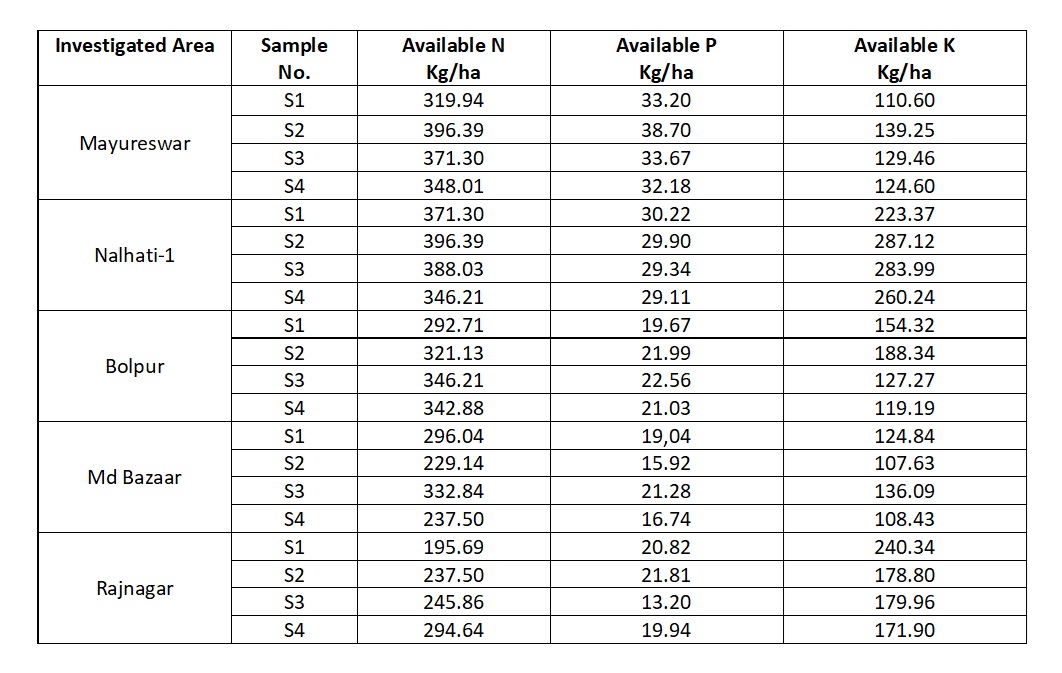
Downloads
Published
How to Cite
CITATION COUNT
Issue
Section
License
Copyright (c) 2024 Dr. Rima Das

This work is licensed under a Creative Commons Attribution 4.0 International License.







